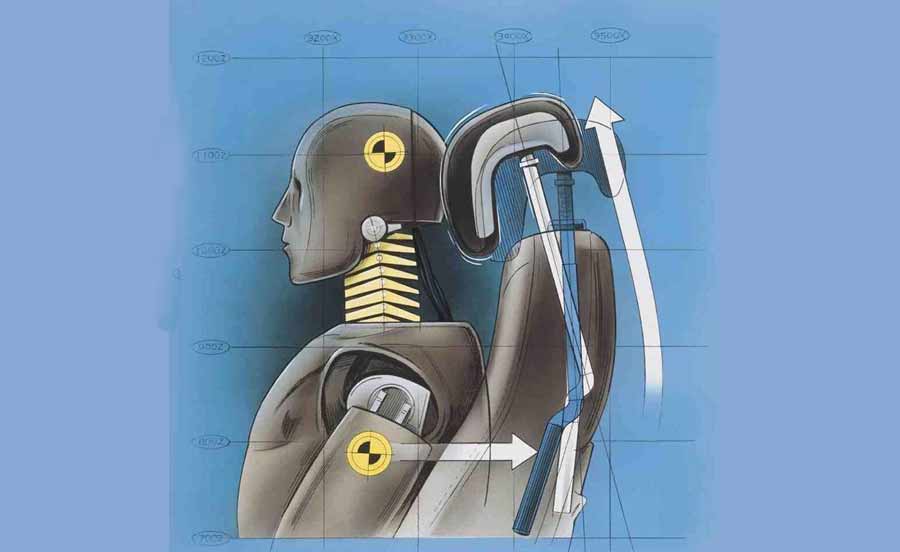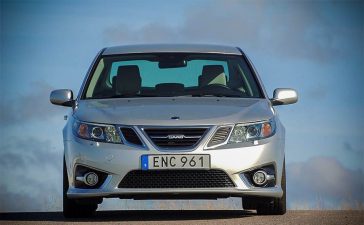Can a seat affect the way you drive? Absolutely. That’s why Saab has a history of developing class-leading seats with innovative world-firsts. Seats that integrate function and ergonomics with warmth and inspiration. Saab Cars already enjoys a reputation for providing the most comfortable seats in the industry.
Like in the Saab cars. The comfortable yet firm driver’s seat is purposely designed to convey signals from the car to support a more intuitive driving experience. Allowing for keen contact between you, the car and the road. All so you can drive with greater confidence and control, without tiring.
The body-hugging sports seats feature pronunced side and thigh support for enthusiastic driving. And like all Saabs front seats they feature SAHR – award-winning active head restraints.

For the ultimate behind-the-wheel experience, opt for our new top-of-the-line Premium natural leather sports seats. Once seated you’ll probably wish you had a long, twisting road ahead.
Ventilated sports seats
Saab was the first car manufacturer to introduce heated seats. No surprise then that the Saab 9-5 was the first car with ventilated seats. Perforated leather and fans in the backrest and seat squab help keep your body cool.

Saab Seats Safety – SAHR
Comfort does not matter if there is no safety, which is why Saabs have always been good in this segment of passive and active car safety. The Saab Active Head Restraints (SAHR) provide state-of-the-art protection against neck injuries, which is proven in rear-end and side crash tests, introduced by Saab in 1997. It was launched when the Saab 9-5 was released for the 1998 model year and had been part of the standard equipment on the Saab 9-3 and 9-5 since.
The most significant research institutes have confirmed the reliability of the practice of these seats, which is why the seats are in Saab. 9-3 highly rated by Britain’s Thatcham Insurance Research Center and Swedish Insurance Company Folksam. SAHR – a Saab innovation that reduces the risk of serious neck injuries by up to 75% in rear-end collisions. The Saab Active Head Restraint (SAHR) has been developed to reduce relative movement between the head and lower back.

The intelligent design is very, very simple, but effective. If the force of rear-end collision is sufficient high, the head restraint is activated by the seat occupant’s bodyweight. The head restraint then moves upward and forward to catch the head as it begins to move backwards.

Simulating rear-end collisions, the Thatcham tests rate the performance of front seats and head restraints in relation to neck injury protection as ‘Poor’, ‘Marginal’, ‘Acceptable’ or ‘Good’.
Saab 9-3 Convertible, SportCombi and 9-5 models have all been awarded the best-possible ‘Good’ rating, as achieved last year by the 9-3 Sport Sedan in the first round of tests.
Thatcham performs static and dynamic tests on seat design. It measures the position of the head restraint, relative to an occupant’s head, on a crash test dummy representing a mid-sized, male adult. A dynamic test is then performed with the seated dummy mounted on a sled, which is accelerated to 16 kph in 0.1 seconds to simulate the effect of a typical low speed rear-end collision.
Real world data from insurance claims shows that the Saab 9-3 with active head restraints has produced a 42 per cent reduction in whiplash injuries, compared to the previous model which did not have them.
The restraint is mounted at the top of a frame, inside the seat-back, which is designed to pivot at its mid point. In a rear-end impact, the occupant’s lower back is forced rearwards by inertia against the bottom portion of the seat-back. A mechanical linkage in the frame then forces the upper half, carrying the head restraint, upwards and forwards to catch the occupant’s head and help minimize the amount of whiplash movement.
Although rear-end collisions are seldom life-threatening, they are a common type of accident which can cause long-term injury and discomfort.











